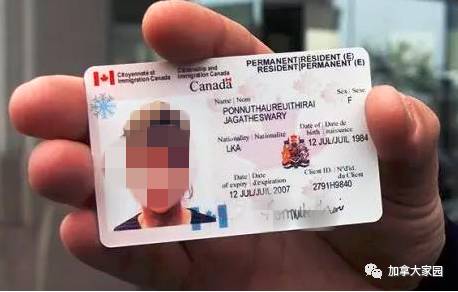Canada Will Pilot A Mailed Maple Leaf Card Renewal Plan From April 30, And The Survey Proportion Is Expected To Increase To 5%.
Canada Will Pilot A Mailed Maple Leaf Card Renewal Plan From April 30, And The Survey Proportion Is Expected To Increase To 5%.
Implementation will begin on April 30 for one year. The announcement notes that this massive postal maple leaf card renewal exercise is currently a pilot program that will assess whether mail practice should continue after a year’s progress.The immigration department noted that by April 30, I had to collect all new cards at the immigration offices in various places. According to statistics, according to the current regulations I have collected, the Immigration Bureau needs to further investigate about 2.5% of the applications.The immigration department said the percentage of further investigations that require investigations after the pilot program will double to 5% due to changes in the criteria for deciding whether to submit them to the survey. As for changes in the standards, the announcement did not state it.For applicants who need to conduct an investigation, the announcement also clearly states possible findings. First, if the investigation results show that immigration officials believe it does not match the permanent resident qualification, the immigration department will still issue a new card for 5 years and will now also be sent to the applicant
Implementation will begin on April 30 for one year
The announcement notes that this massive postal maple leaf card renewal exercise is currently a pilot program that will assess whether mail practice should continue after a year’s progress.
The immigration department noted that by April 30, I had to collect all new cards at the immigration offices in various places. According to statistics, according to the current regulations I have collected, the Immigration Bureau needs to further investigate about 2.5% of the applications.
The immigration department said the percentage of further investigations that require investigations after the pilot program will double to 5% due to changes in the criteria for deciding whether to submit them to the survey. As for changes in the standards, the announcement did not state it.
For some temporary important matters that require returning to their original residence, this trial plan also includes an emergency application for maple card replacement. Among applicants who do not need to investigate, 90% do not need to receive the card in person, but use email instead. Only 10% of applicants are required to collect in person. Furthermore, the order in which emergency applications are processed remains based on the previous “first review” principle, but has not been changed.
For applicants who need to conduct an investigation, the announcement also clearly states possible findings. First, if the investigation results show that immigration officials believe it does not match the permanent resident qualification, the immigration department will still issue a new card for 5 years and will now also be sent to the applicant's address by mail.
Those who are not eligible may issue a one-year card
The second case is that if an application for a replacement card is found to be ineligible after investigation, it will be denied and face the need to leave the country. Currently, the immigration department can still issue a one-year maple leaf card instead of a five-year new card. Another situation is that the applicant cannot be contacted during the investigation period, and after 6 months, the application will be deemed to be waived and the immigration department will not issue the card again.
There is also an announcement to explain the issue of new cards returned by mail. The announcement states that general positions in Canada must send all maple trees with incorrect addresses to the Sydney Immigration Centre. Immigration officials will try to find a new address. If the applicant is not notified of the change of the address, the free junk card will remain in the filing cabinet for 6 months, waiting for the applicant to pick it up.
Fang introduced the Australian government's policy adjustments to the student visa program over the past 6 to 9 months. Some adjustments have been implemented, and some policy adjustments will be implemented next year. Most policy adjustments are related to the higher education sector, which has an impact on Chinese students and the entire overseas study market. The number of applications may increase in the coming months.
Fang revealed that there is a time difference between students’ intentions for studying abroad and practical application. The current figures may not fully reflect the overall visa trend in 2012, and the real student visa number will not be seen until early 2013. According to reports, the number of student visa applications in Australia has decreased by about 18% compared to 2010, mainly due to the decline in the number of student visa applications in China. Reasons for the decrease in application include the following points, the global financial crisis, appreciation of the Australian dollar, the improvement in competitiveness of other countries, and the adjustment of Australia's skilled immigration policy.





